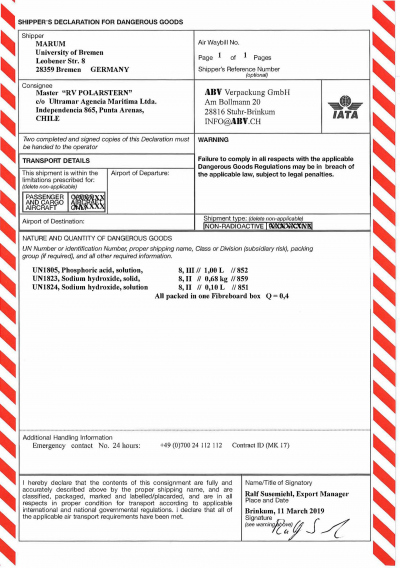Dangerous goods
Dangerous goods include everything that can become dangerous. Even the smallest quantities are affected and must be declared. The best example is the lithium accumulators or batteries contained in many technical devices, which must be labelled and/or declared during transports or when sent by post.
As a result of some accidents in recent years, the regulations are becoming more and more stringent and are constantly being amended. Incorrect or missing information in the declarations or errors in the packaging and securing of the dangerous goods are punished with severely high penalties for all involved.
Dangerous goods must be declared and labelled.
Dangerous goods must be safely packed and secured during transport.
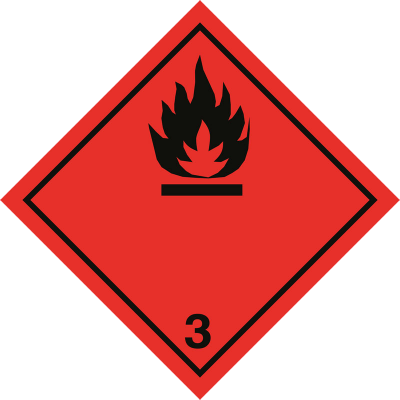
Safety data sheets
Manufacturers are obliged to provide safety data sheets (SDS) for hazardous substances, in which the properties, transport conditions, etc. of the hazardous substances are listed and described.
We require a current safety data sheet in English, preferably in electronic form (pdf) or in paper form, for each hazardous substance transported from the participants who work with the respective hazardous substances. These safety data sheets can usually be requested from the manufacturer or downloaded.
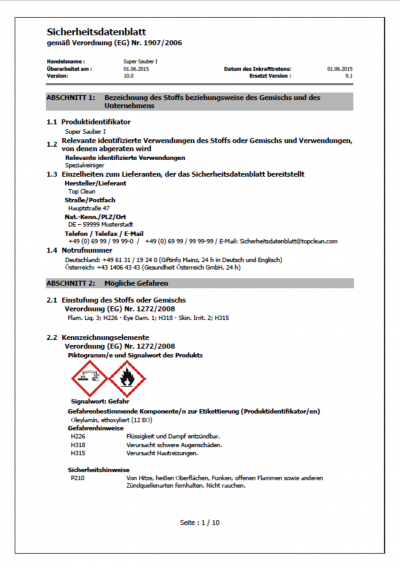
Attention! Exception of class 9 (Lithium batteries/akkumulators)
Class 9 (lithium accumulators/batteries) is an exception. Here, in addition to the safety data sheet, a test certificate is required confirming that a number of the batteries have been tested and standardised destroyed according to a specified standard.
ATTENTION: Only NEW lithium batteries may be transported. Most shipping companies refuse to transport used lithium batteries for safety reasons.
In air transport, it has become almost impossible to ship lithium batteries. Individual lithium batteries up to 100Wh may be transported in hand luggage.
If you are unsure, please contact us!
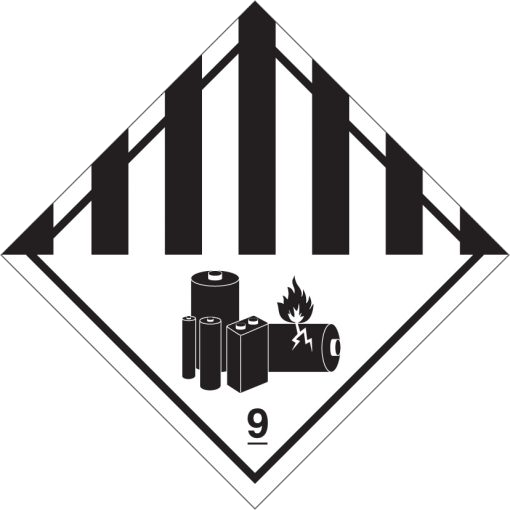
Packaging
Even if it sometimes appears otherwise, dangerous goods are transported in suitable and approved packaging, e.g. gas cylinders, plastic and glass bottles or other suitable containers. Usually these packagings are surrounded by suitable outer packagings (cardboard boxes with UN approval, depending on the dangerous goods property, see picture). The cardboard boxes can be recognised by their approval number. This also contains the information for which group of hazardous substances the carton is suitable. Cavities in the cartons are filled with special fillers if necessary. These can be corrugated cardboard or absorbent zeolite granules. The cartons are then sealed with approved, glass-fibre reinforced adhesive tapes. The UN cartons must be labelled according to their contents and provided with stickers.
If the cartons are transported in aluminium boxes, these must be provided with OVERPACK stickers.
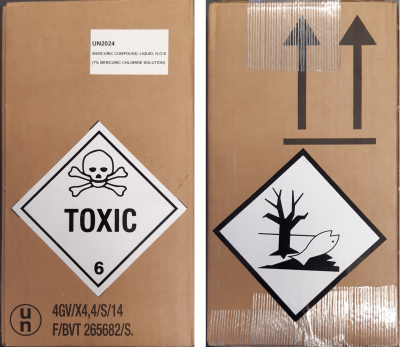
Labelling
Dangerous goods are to be marked according to the regulations and their classification.
The packages are marked with danger labels (size 100mm x100mm) and the containers are marked with placards (size 250x250 mm).
In the safety data sheets of the hazardous substances, you will find information on transport and the required danger labels/placards under section 14).
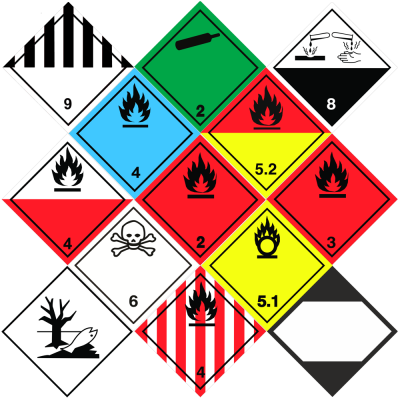
Transport by sea
Hazardous goods are divided into different classes depending on their aggregate state and properties. There are currently nine classes of hazardous substances. However, hazardous substances can also be assigned to further subclasses in addition to their main class.
For maritime transport, all declarable hazardous substances must be listed in the so-called packing certificate (IMO declaration). This listing includes the UN number each hazardous substance has), its standard name, the quantity, the type of packaging, the properties and the packing group. In addition, the approval number of the outer packaging must be mentioned. These parameters must correspond exactly to the real dangerous goods, otherwise it can be expensive.
The transport of dangerous goods by sea is regulated by the IMDG Code (International Maritime Code for Dangerous Goods) of the IMO (International Maritime Organization of the United Nations).
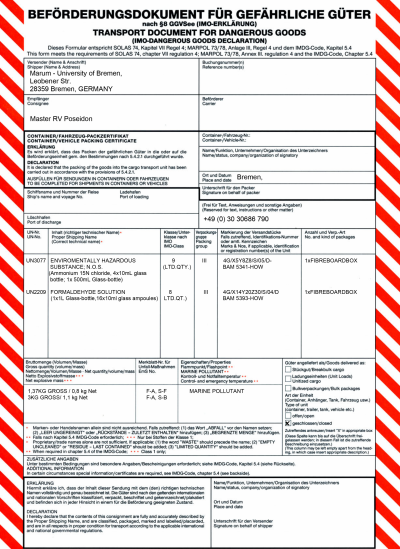
Transport by road
The transport of dangerous goods by road is regulated by the Agreement concerning the International Carriage of Dangerous Goods by Road (ADR).
The dangerous goods to be transported are listed in the transport document for dangerous goods in accordance with ADR Chapter 5.4.1, comparable to the packing certificate for maritime transport.
It should be noted here that the dangerous goods are added together according to a points system, which is calculated from the quantity of the individual goods and the danger they pose. If the limit of currently 1000 points per transport is exceeded, additional regulations come into force that must be observed.
In addition, the driver of the truck must be given the written instructions in accordance with ADR in his own language, which describe measures to be taken in the event of an accident or emergency for the individual groups of hazardous substances.
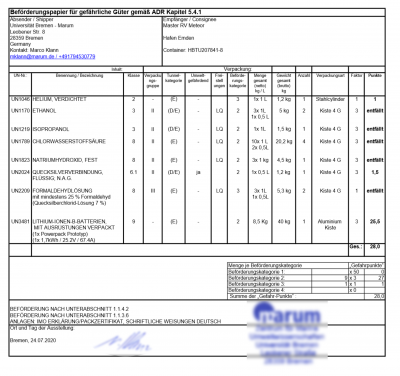
Transport by air
The transport of dangerous goods by air is governed by the regulations of the IATA (International Air Transport Association).
The packing of dangerous goods and the preparation of the prescribed shipping documents may only be carried out by persons who have a certificate of competence recognised by the German Federal Aviation Authority (LBA). The certificate of competence is valid for 2 years and must be renewed thereafter.
This certificate of competence is not available in the logistics group, so that packing and shipping must be carried out by an external service provider with a certificate of competence.
